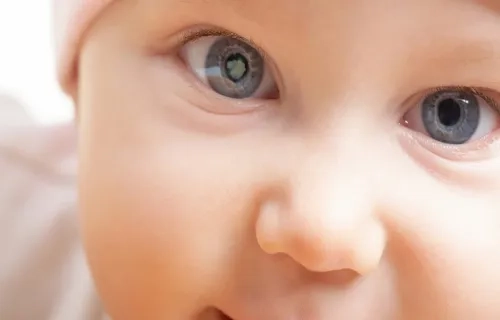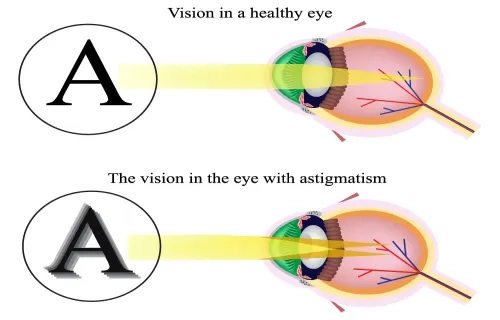
Strabismus, more commonly known as squint or cross-eyed, is a vision condition in which a person cannot align both eyes simultaneously under normal conditions. One or both of the eyes may turn inward, outward, upward or downward. An eye turn may be constant (when the eye turns all of the time), intermittent (turning only some of the time) or can alternate between both eyes.

Colour vision deficiency is the inability to distinguish certain shades of colour under normal lighting conditions. The term "colour blindness" is more commonly used to describe this visual condition, but very few people are completely colour blind.

The prevalence of epiblepharon is about 10% in the paediatric population with predilection for the younger age groups. For some milder cases, the children are able to grow out of this condition as their facial structure matures. There is no gender difference in prevalence.

A cataract is any cloudiness or opacity of the lens in the eye, which is normally crystal clear. There are many types of cataracts. Some cataracts are small and do not interfere with vision but there are other cataracts which are large and cause severe vision loss.

A chalazion is a small, usually painless, lump or swelling that appears on your eyelid. A blocked meibomian or oil gland causes this condition. It can develop on the upper or lower eyelid, and may disappear without treatment.

Astigmatism is a common vision condition which happens due to refractive errors in the eye, which is similar to myopia (short-sightedness) and hyperopia (long sightedness). These conditions can cause blurred or distorted vision when at a distance and when near.

Ptosis refers to the drooping of the upper eyelid and when discovered to be present at birth or within the first year of age, it is referred to as congenital ptosis. Ptosis happens when there is poor development of the muscle (levator palpebrae superioris) that lifts the upper eyelid to open the eye properly1. Though rarely, ptosis can also be due to genetic2 or neurological dysfunction reasons as well.

Conjunctivitis also known as pink eye, is an infection or inflammation of the conjunctiva of the eye1. The conjunctiva is the thin and transparent layer of membrane that lines the white part of the eye and inner surface of the eyelids

Dacryostenosis, more commonly known as a blocked tear duct, happens when there is obstruction in the nasolacrimal duct. This usually happens when the tear duct is narrow or when the lower end or top of the duct does not open up as it should at birth which causes blockage2,3. Even though this obstruction may be congenital (already present at birth), it may not be obvious to parents as tear production only starts developing in newborn babies around 2 weeks onwards



